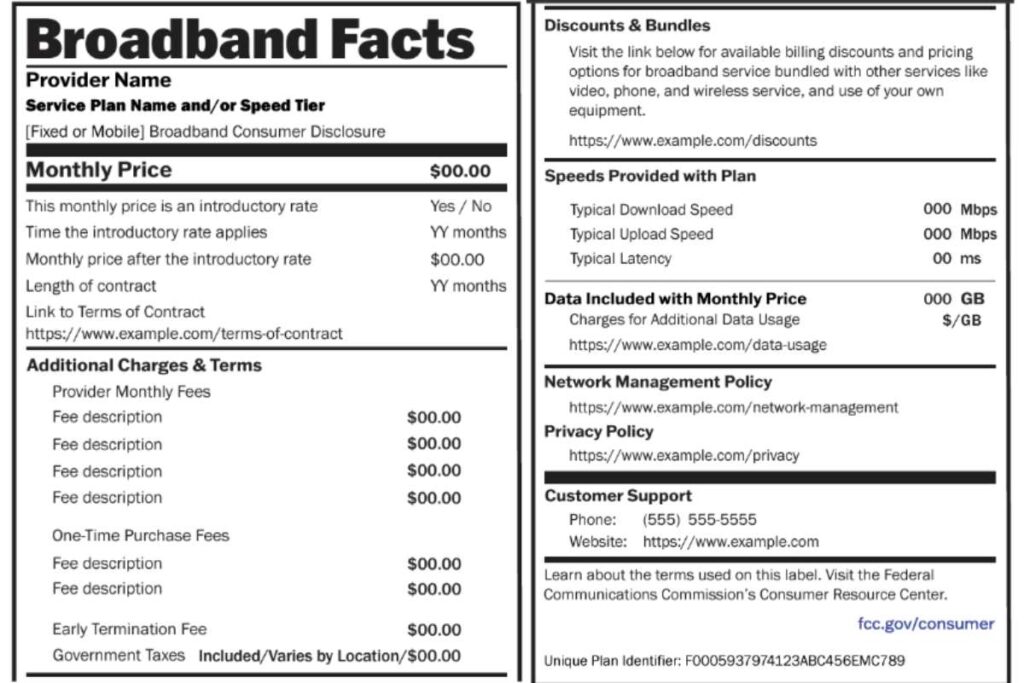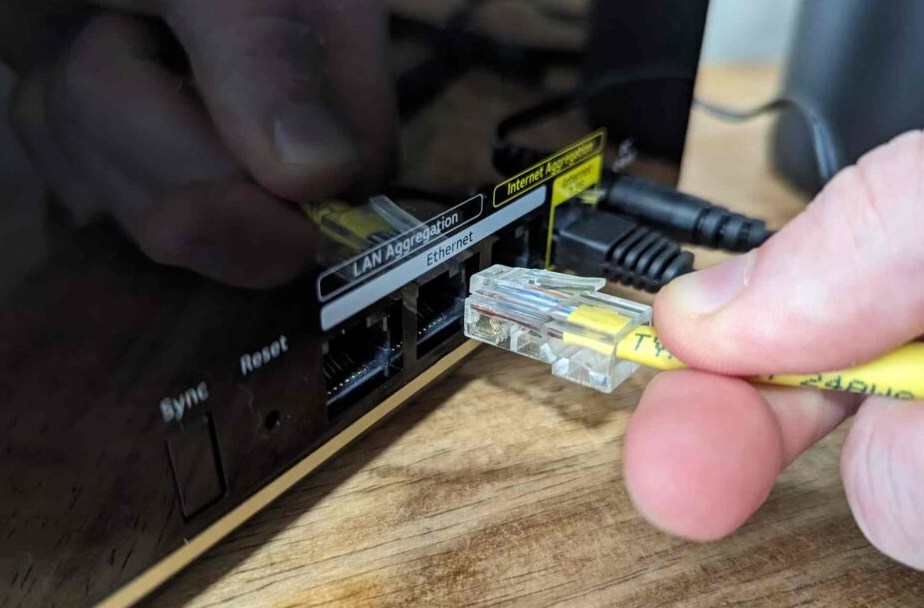The next time you’re in the market for a home or mobile internet plan, try to find a clear and standardized label outlining your fee, the expected download speeds, and details about the internet provider’s policies.
The Federal Communications Commission wanted this new disclosure, which resembles the nutrition labels on food packaging. Moreover, it would make it easier for consumers to compare plans and understand the offerings from different ISPs.
Notably, these labels became effective recently. All major ISPs now display them to help consumers make sense of the mix of plans, fees, and promotional rates on the market. FCC and White House officials believe that the transparency these labels offer could result in cost savings for Americans.
Alejandro Roark, the FCC’s bureau chief for consumer and government affairs, noted that they adopted the format to ensure that essential information about broadband internet service is readily recognizable and understandable.
ALSO READ: Pizza Chain Closes California Locations Amid Minimum Wage Hike
Revolutionizing “Consumer Broadband” Transparency
The newly introduced “consumer broadband labels” are indeed a game changer in today’s world. Notably, the labels are available online, in stores, and, in many cases, in English and Spanish. Gone are the days of hidden fees and confusing jargon buried in fine print.
Now, consumers can easily access details about early termination fees, data caps, and network practices such as speed throttling. Roark emphasizes that these levels must be displayed, ensuring accessibility and convenience for consumers to compare plans.
And most importantly, to make informed decisions. Despite these advancements, many Americans still battle limited options for broadband providers. This is especially true with millions lacking access to high-speed internet, especially in rural and tribal areas.
Looming Internet Crisis Threatens Millions of Americans’ Household
As the end of a federal aid program approaches, an estimated 23 million households — nearly 1 in 5 across the US will most likely lose their internet plans. With the program running out of funds in April, approximately 59 million Americans will be cut off from vital online services.

ALSO READ: Neutrogena Announces Closing Its Los Angeles Office, Lays Off Staff
Surveys indicate that many will be forced to choose between having internet at home or having necessities like groceries. Amidst the crisis, the FCC forced ISPs to be clear with consumers, which could offer little hope. This effort, supported by the Biden administration, is crucial to improving competition among ISPs.
A White House official noted that these measures will fight deceptive business practices like junk fees. “These are mechanisms designed to make it more likely that companies will compete with each other on the grounds of consumer price and quality of products. And less likely to compete with each other on confusing terms or by misleading customers,” the official said.
A Long-Awaited Revolution in Consumer Broadband
The labels have been years in the making. In 2016, an FCC advisory committee initially released voluntary disclosures. Then, under the 2021 bipartisan infrastructure law, the FCC mandated these broadband disclosure labels and held a careful process to design and finalize them. And the result?
Well, the result extends beyond mere convenience. Consumers stand to benefit greatly by comparing plans and offerings from providers such as Comcast, Verizon, and AT&T. Moreover, the labels’ machine-readable format helps researchers and product review sites gather data on the ISPs’ plans and marketing.

As providers must display these labels prominently, FCC officials will monitor for evidence or consumer feedback. Any evidence of non-compliance could lead to agency investigations or fines. “We’re going to be keeping a close eye to see if there are any issues with implementation,” said an FCC official on the call.
The official continued, “Internet service providers (ISPs) could still step in voluntarily to close the gap for the millions of Americans potentially affected by the end of the program. “We encourage providers to take efforts to keep consumers connected at this critical time,” added the agency.
Overall, the rollout of broadband disclosure labels shows a huge step towards transparency and accountability in the broadband market. Moreover, it empowers consumers and fosters a more competitive and informed world for Internet services.
You Might Also Like:
Deion Sanders Responds Emotionally as Daughter Deiondra Shares Pregnancy News
Saucy Santana’s Sneak Peek of “Get It Sexyy” Remix Sets the Internet Ablaze
J. Cole Makes Triumphant Return to the Stage Following Apology to Kendrick Lamar
Get the Hot Girl Guide! Megan Thee Stallion Reveals Her Sizzling Workout Secrets
Did She Deliver? Social Media Buzzes Over Yung Miami’s Hot New Single “CFWM”
